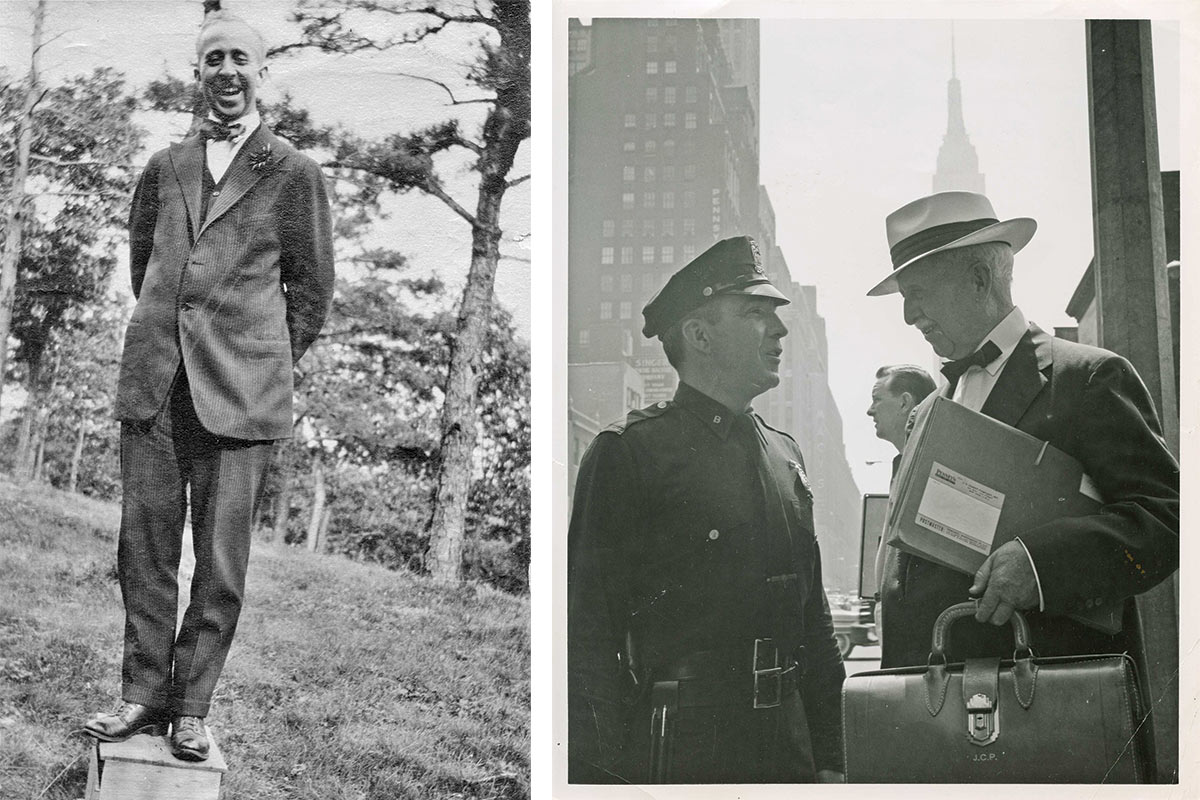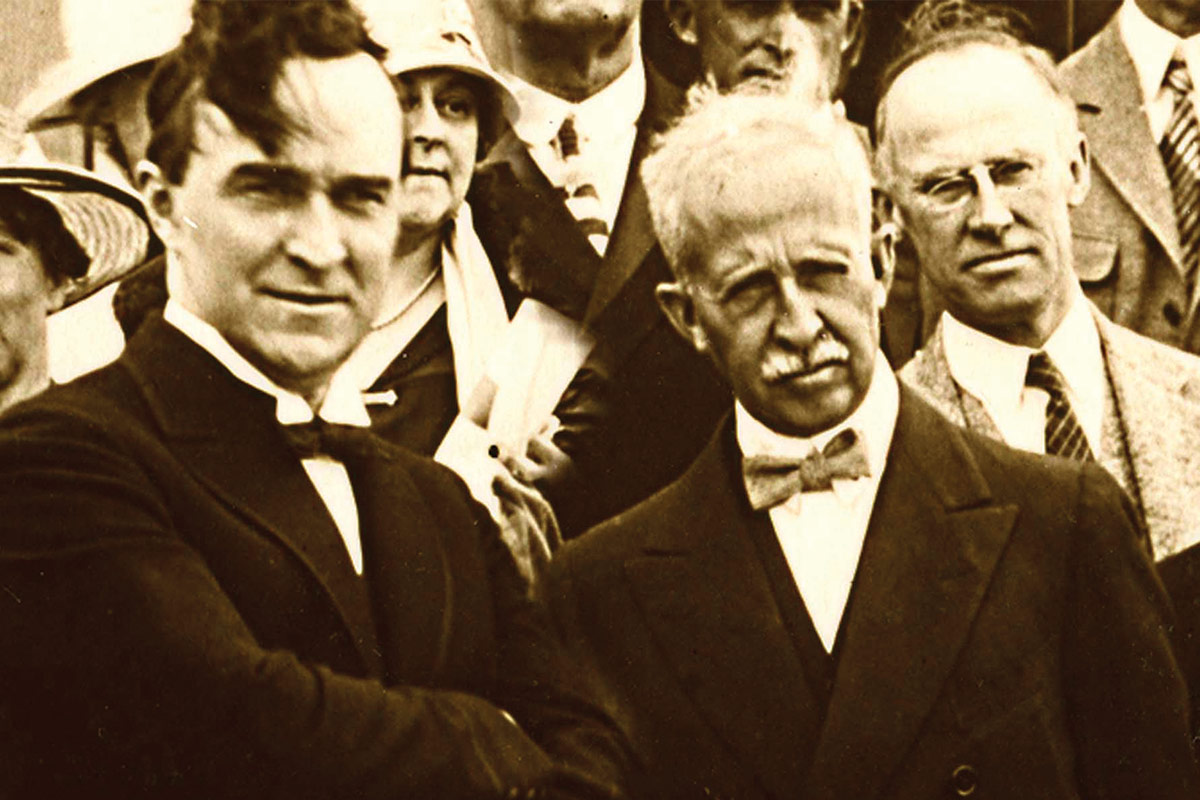James Cash Penney
1875-1971
Leader and Benefactor through the Depression
"In my distraught state I did not altogether grasp it clearly. But I felt that my steps had been led in some way halfway across the city to this Mission."
It was a cold night in December 1910 when James Cash Penney slipped quietly off the Bowery and into a rescue mission — his first visit of many, a visit borne of sorrow, but an auspicious visit nonetheless.
James Penney was a young entrepreneur from the Midwest who had seen remarkable success in the first decade of the 20th century, founding a chain of stores called Golden Rule Stores, based on the industrious, ethical practices he had learned as a child.
The rapidly growing retail chain frequently took Penney away from his beloved wife Berta and their two sons. It was during one of these trips that Berta suddenly fell deathly ill, and then died at Christmas 1910.
“In that hour my world crashed about me,” Penney wrote. The retail pioneer didn’t know where to turn. Outwardly ethical, inside he had no deeper spiritual source to brace his heart through a crisis. “I didn’t pray during this shattering experience, for the reason I could not. The plain fact is, I had not learned how to pray.”
Weeks later, Penney found himself wandering the Bowery in New York City, utterly despondent. Among the seedier storefronts were scattered rescue missions. The new chapel of The Bowery Mission had been dedicated by President William Howard Taft only one year earlier. Penney heard a faint sound in the night, something musical that seemed like a ray of warmth. He followed the sound.

Left: By 1920 Penney had recovered his zest for life. Right: J.C. Penney in NYC. Credit: DeGolyer Library, Southern Methodist University, Dallas, Texas
Penney recounted, “I stepped inside the mission, slipping into a seat at the back of the room.”
A fellow merchant was speaking up front. Penney noticed “he was dressed in the height of fashion.” Yet, the man talked of his spiral down to “a bitter caricature of a man.”
Penney couldn’t reconcile the man he saw with the picture presented. Then, he realized that he was that man now, spiraling downward, widowed at the age of 35, drawn to the temptations of New York’s Bowery to drown his sorrows.
The speaker then expressed his own surprise that “the good people of this rescue mission” put joy back into his heart.
Penney heard the man’s words as a preplanned telegram from God. “In my distraught state I did not altogether grasp it clearly. But I felt that my steps had been led in some way halfway across the city to this Mission.” The man in the back pew felt his heart fill with courage. Penney left as anonymously as he had arrived, but not without leaving a donation, the first of many. Emboldened, Penney threw himself back into building what would become the J.C. Penney Company, “with a certain reviving sense of pioneering adventure.”
The entrepreneur also expanded his involvement in compassionate endeavors. In 1926, Penney asked a young minister named Rev. Daniel A. Poling to join him as head of the J.C. Penney Foundation.
In addition to ministerial and philanthropic duties, Rev. Poling was serving as Editor-in-Chief of the Christian Herald, a newspaper Penney’s parents had read to him as a child. The popular newspaper backed several faith-based charitable endeavors, especially The Bowery Mission.
By 1927, the Christian Herald was in need of financial support and asked Penney if he would take it over. Penney began to use his business and promotional skills on behalf of the magazine and its charitable concerns, and even became its interim President. On its fiftieth anniversary, January 7, 1928, the Christian Herald announced “President J.C. Penney!”
However, just as the financial situation of the Christian Herald and The Bowery Mission was beginning to stabilize, the Great Depression of 1929 hit.

Rev Daniel A. Poling & Mr. J.C. Penney, 1927, Photo edited. Credit: DeGolyer Library, Southern Methodist University, Dallas, Texas,
Penney’s business endeavors teetered, but he wanted to save the Mission. He invested personally to make the Mission debt free.
Unable to do more, Penney gave the Christian Herald and The Bowery Mission back to Poling. Penney later wrote to a friend, “I almost lost all I had...I undertook to revive and finance the Christian Herald...which I could not well afford. But I am glad that I did, for I feel Dan Poling and his splendid organization have done a great job.”
Penney did not become a stranger to the Mission, however. When his finances recovered, he resumed giving. All told, his contributions to the Christian Herald and The Bowery Mission probably totaled $4 million (roughly $52 million today).
Story by Tony Carnes
SOURCES: Curry, Mary E. Creating an American Institution: The Merchandising Genius of J.C. Penney. Garland, 1993.; Penney, James Cash. J.C. Penney Papers, circa 1800-2000. DeGolyer Library, Southern Methodist University, Dallas, TX.; Penney, James Cash. Fifty Years with the Golden Rule. New York Harper, 1950.; Poling, Daniel Alfred. Mine Eyes Have Seen: An Autobiography. Peter Davies, 1960.
Get Involved
Learn more about how you can support the life-transforming work of The Bowery Mission.

